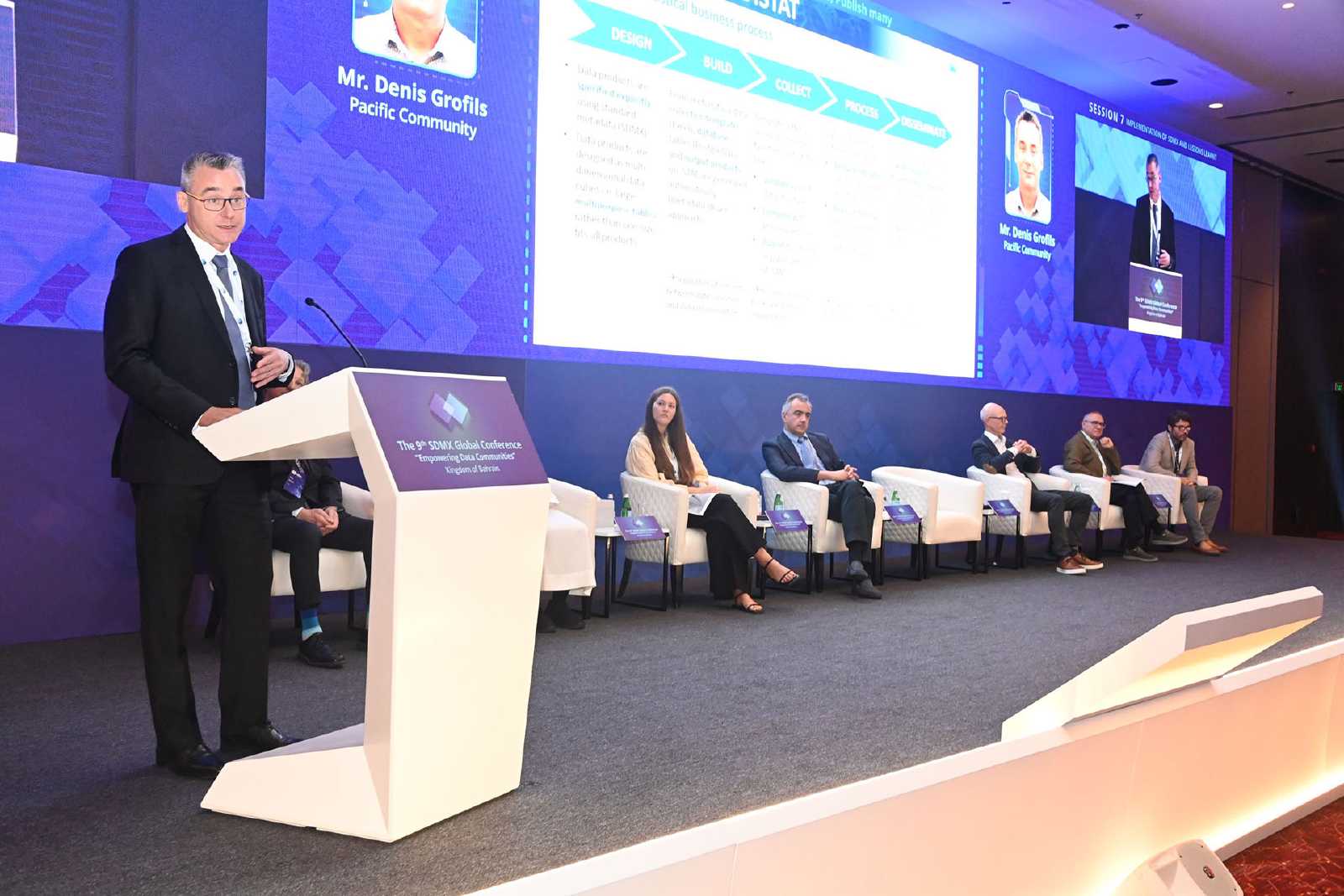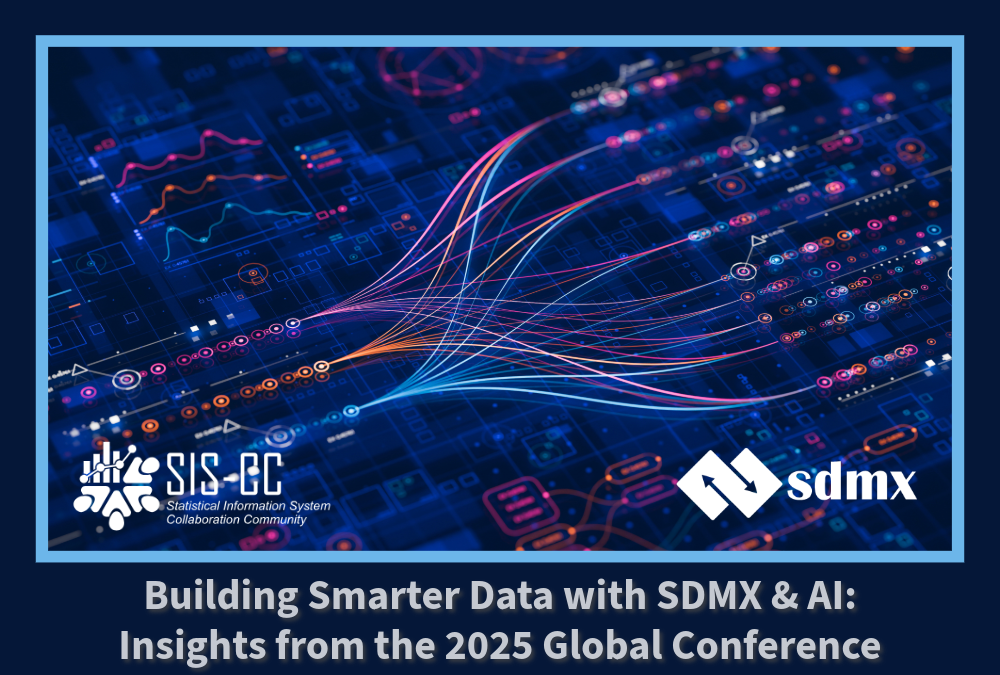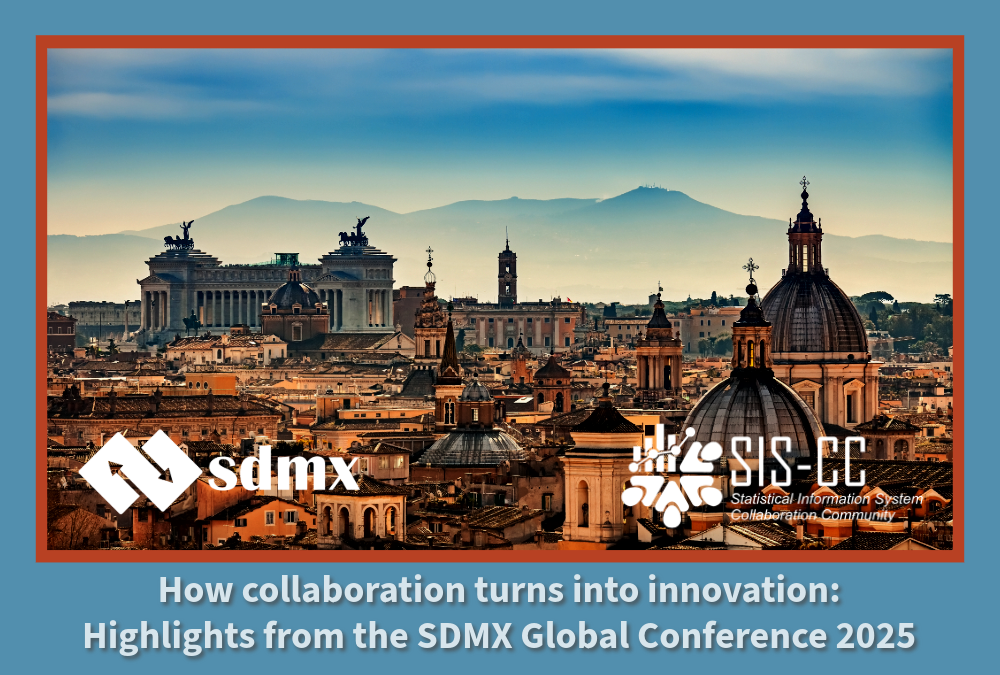
Following the conclusion of the 9th SDMX Global Conference, themed ‘Empowering Data Communities’ and held in the Kingdom of Bahrain last month, a melting pot of ideas, this event illuminated the evolving landscape of data utilisation and accessibility through SDMX. This post-conference recap explores the broader impact of SDMX beyond traditional frameworks, collaborative efforts that pave the way for a data-driven future and highlights from the SIS-CC members’ contributions in Bahrain.
To kick-off proceedings, Eric Anvar, Head of Smart Data at the OECD, opened with a keynote on the importance of SDMX. The .Stat Suite, built on SDMX and used across various organisations inside and outside the SIS-CC, is not the only reason. SDMX semantics, with its metadata-driven data user experience, and the benefits of building an SDMX backbone and governance, showcase the importance of the standard. SDMX facilitates specialisation among teams, staff mobility, data management by non-coding experts, better migration of platforms, preservation of domain autonomy, and the development of a data mesh. In the near future, it may be possible to implement Natural Language Processing (NLP) to bridge the cognitive gap between data producers and data users by building a natural language capable of Data Explorer.
SIS-CC members are already making strides in this direction. Yves Jacques, UNICEF’s Chief of Frontier Data and Technology, presented the use-case of the ‘How many‘ search engine, built on an NLP algorithm, highlighting how SDMX metadata brought the tool to life and played a crucial role in bringing UNICEF’s golden standard data on the situation of children closer to the public.
Alessandro Benedetti, founder of Sease Ltd, also delved into the SIS-CC efforts to implement Large Language Models (LLMs). He presented a proof of concept of integrating ChatGPT – with the view of moving to open-source LLMs in the future – into the OECD’s Data Explorer. As with the case of UNICEF, the idea is to make official statistics more accessible and easily discoverable by matching data points from the OECD’s databases to natural language queries.
One essential point tackled during the conference was the opportunities to better integrate SDMX with other platforms. For example, SIS-CC members needed to bridge the gap between leading commercial data visualisation software and SDMX. David Barraclough, Smart Data Practices Manager at the OECD, told the story of how the SIS-CC SDMX Power BI connector was built and how it allows a seamless transition between SDMX and Microsoft’s tools.
David Barraclough also explained the advantages of moving to a fully SDMX-compliant platform, including the many existing tools for integration, its worldwide implementation and the fact that it’s future-proofed with SDMX 3.0 and has an active community behind it. Moreover, as the OECD is migrating from a non-SDMX native system (OECD.Stat) to a fully SDMX native system (.Stat Suite), he shared some lessons learnt. When thinking of migrating to an SDMX based platform, organisations should carefully plan and build a migration team capable of rallying user support and transferring SDMX knowledge.
Another use case of SDMX by an SIS-CC member was brought to the conference by Denis Grofils, advisor in statistical process modernisation for the Pacific Data Hub programme at the Pacific Community. The Pacific Data Hub, which is powered by .Stat Suite and based on SDMX, allows the same data to be accessed through different channels like the Data Explorer, and statistical software like R, Python or Stata, web CMS such as WordPress, or their own applications like the Data Catalog and Pacific Map. Using SDMX has made the Pacific Data Hub processes more efficient and its data more interoperable.

Where do we go from here? Jonathan Challener, the SIS-CC community manager, focused on capacity-building as part of the SDMX Roadmap 2025, that focuses on building upon recent successes showcasing the benefits of using SDMX and leveraging the collective expertise of the SDMX network. Some capacity-building activities are already underway, including the SIS-CC’s .Stat Academy. More than a year after its launch, enrolment and course completion continue to grow monthly, creating a broad community of learners and practitioners around SDMX. Behind the scenes, three more courses on referential metadata modelling, disseminating data with an optimised end-user experience, and creating and applying mappings for SDMX are in the works!
There were many more examples that demonstrated the strength of our community built on open source and open standards (SDMX) including from Statistics Thailand, the National Bureau of Statistics of Maldives, National Bank of Belgium, Eurostat, FAO, and the Bank for International Settlements.
As the curtain fell on the 9th SDMX Global Conference, echoes of data innovation lingered. The event wasn’t just a snapshot of the status-quo but a glimpse into the future of data integration and comprehension, thanks to SDMX. We hope you will join us in envisioning a landscape where data isn’t just information but a transformation catalyst, shaping how we understand and navigate the world.
For a full list of presenters, presentations, and session recordings please visit the 9th SDMX Global Conference website.


